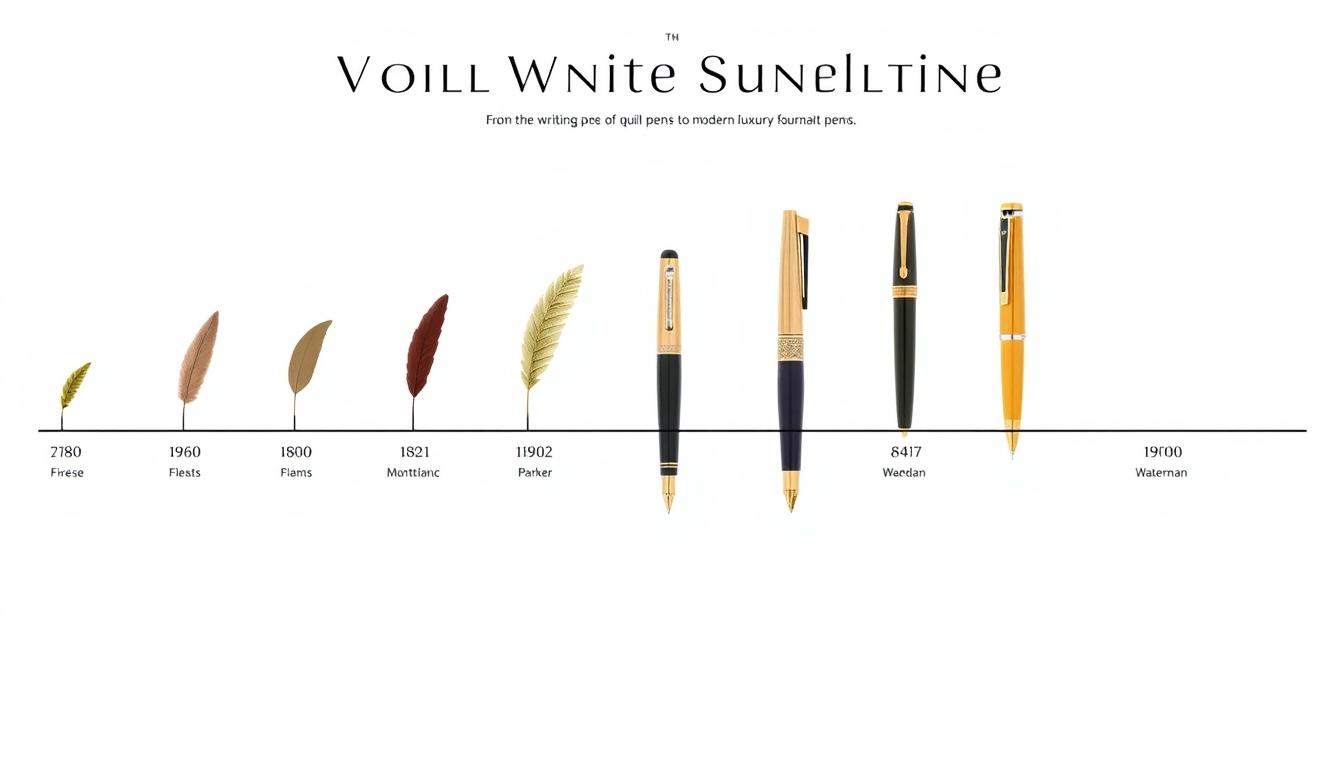In a digital age where typing has largely replaced handwriting, luxury pens remain powerful symbols of refinement and personal expression. These exquisite writing instruments transcend mere functionality, becoming heirlooms that tell stories across generations. From boardroom signatures to personal correspondence, a luxury pen makes a statement about its owner’s appreciation for craftsmanship and tradition. This comprehensive guide examines twelve prestigious pen manufacturers whose creations have defined the luxury writing experience: Caran d’Ache, Montblanc, Namiki, Nakaya, Graf von Faber-Castell, S.T. Dupont, Pelikan, Parker, Waterman, Lamy, Cross, and Tibaldi. Join us as we explore their rich histories, evaluate their flagship models, and help you discover which luxury pen might become your perfect writing companion.
The Rich History of Luxury Pens
The evolution of writing instruments from quills to modern luxury fountain pens
The journey of luxury pens began in the early 19th century as writing instruments evolved from quills to more sophisticated designs. The fountain pen revolution started in 1827 when Romanian inventor Petrache Poenaru patented the first fountain pen with a replaceable ink cartridge. This innovation laid the groundwork for what would become a thriving industry of precision writing instruments.
By the late 1800s, companies like Waterman and Parker emerged as pioneers, introducing reliable fountain pens that eliminated the inconvenience of constant dipping in inkwells. Lewis Waterman’s 1884 patent for the first reliable fountain pen with a regulated ink flow system revolutionized writing. Shortly after, George Parker introduced innovations like the “Lucky Curve” feed system in 1894, which prevented ink from leaking when the pen was carried.
The early 20th century saw the rise of European manufacturers who would define luxury writing. Montblanc, founded in 1906, introduced their iconic Meisterstück (Masterpiece) in 1924, featuring a revolutionary piston-filling mechanism. Pelikan followed in 1929 with their differentiated piston mechanism, while the 1950s saw S.T. Dupont perfect their lacquer techniques for pen bodies.
The mid-20th century brought significant innovations: Parker’s development of Quick-drying “Quink” ink in 1931, the introduction of the ballpoint pen for commercial use in the 1940s, and the creation of specialized nibs that could produce varying line widths. Japanese manufacturers like Namiki (Pilot’s luxury division) began incorporating traditional Urushi lacquer techniques into pen making, creating writing instruments that were also works of art.
Today’s luxury pens blend time-honored craftsmanship with modern innovations. While maintaining traditional manufacturing methods, companies have introduced modern materials like titanium, carbon fiber, and advanced resins. Limited editions, artist collaborations, and pens commemorating historical events have transformed these writing instruments into collectibles that appreciate in value. Despite the digital revolution, luxury pens continue to thrive as symbols of personal expression, status, and appreciation for the art of writing.
Luxury Pen Brand Reviews
Montblanc
Brand History: Founded in Hamburg, Germany in 1906, Montblanc began as the Simplo Filler Pen Company. Their breakthrough came in 1924 with the introduction of the Meisterstück (Masterpiece) collection, which remains their flagship line today. The company’s iconic white star emblem, representing the snow-capped peak of Mont Blanc, has become synonymous with luxury writing instruments worldwide. Montblanc has expanded beyond pens to leather goods, watches, and accessories, but writing instruments remain at the heart of their identity.
Current Flagship Model: The Meisterstück 149 is Montblanc’s most recognizable creation. This large fountain pen features a hand-crafted 18K gold nib, the signature white star emblem, and a barrel made from precious resin. Its piston-filling mechanism and perfect balance make it the standard against which other luxury pens are measured.
Pros
- Unmatched brand recognition and prestige
- Exceptional writing experience with hand-crafted nibs
- Strong resale value and investment potential
- Comprehensive warranty and service network
Cons
- Premium pricing that may be prohibitive
- Some models can be heavy for extended writing
- Limited customization options compared to boutique brands
Key Feature: Montblanc’s hand-crafted nibs undergo 35 separate production processes and rigorous testing to ensure perfect ink flow and writing performance. Each nib is “run in” by hand before leaving the factory.
Experience Montblanc Excellence
Discover why Montblanc has been the choice of world leaders and discerning writers for nearly a century.
Namiki

Brand History: Namiki is the luxury division of the Pilot Corporation, founded in Japan in 1918. Named after company founder Ryosuke Namiki, the brand became renowned for incorporating traditional Japanese Maki-e lacquer art into pen design. In the 1920s, Namiki partnered with Dunhill to distribute their artistic pens globally, establishing their reputation for merging writing instruments with fine art. Today, Namiki represents the pinnacle of Japanese pen craftsmanship, with each piece requiring months of work by master artisans.
Current Flagship Model: The Namiki Emperor features a generous size and showcases the highest level of Maki-e artistry. Each pen is hand-decorated by a master artist using traditional techniques involving urushi lacquer and gold or silver powder. The 18K gold nibs are renowned for their exceptional flexibility and writing performance.
Pros
- Unparalleled artistic value with traditional Maki-e techniques
- Exceptional writing performance with responsive nibs
- Each pen is a unique work of art by named master artisans
- Strong investment potential due to limited production
Cons
- Extremely high price point
- Long waiting periods for custom or limited editions
- Requires careful handling and maintenance
Key Feature: Namiki’s Maki-e technique involves applying multiple layers of urushi lacquer and decorating with gold, silver, or platinum powder. Each pen requires months of work, with artisans signing their creations.
Own a Piece of Japanese Artistry
Each Namiki pen represents centuries of Japanese artistic tradition combined with modern writing technology.
Nakaya
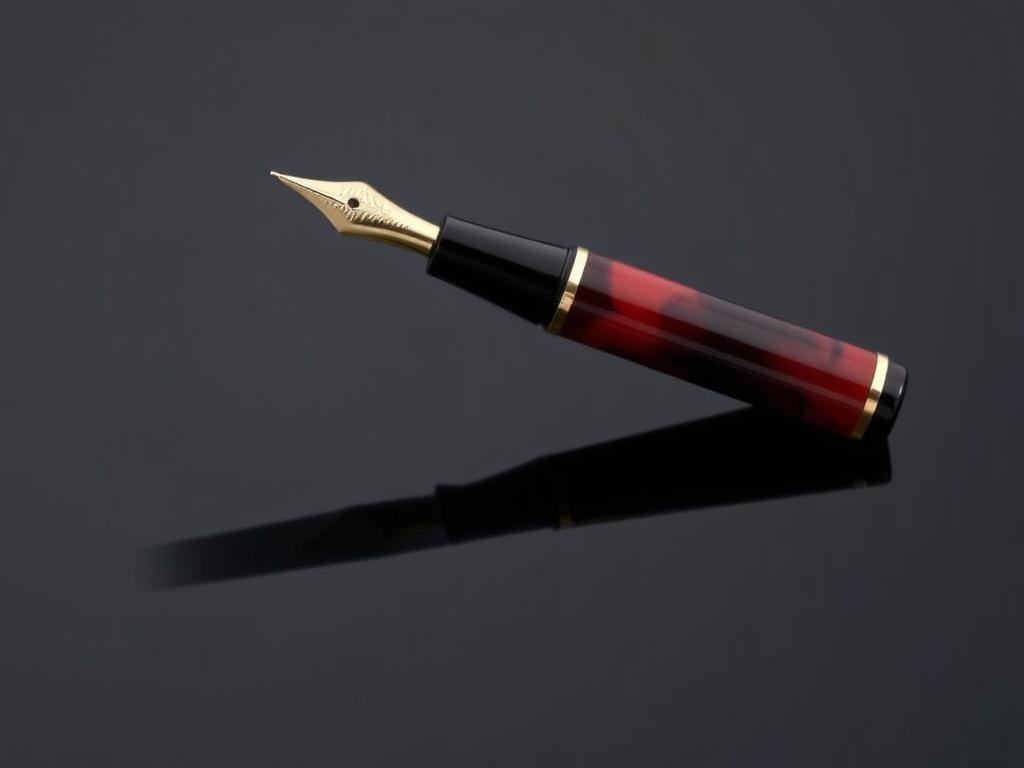
Brand History: Founded in 1999 by former Platinum Pen craftsmen led by Toshiya Nakata, Nakaya represents a return to traditional Japanese pen-making. The company was established to preserve hand-crafting techniques being lost to mass production. Each Nakaya pen is made by a small team of artisans in Tokyo, with production limited to approximately 1,000 pens annually. The brand has gained a devoted following among pen enthusiasts for their exceptional urushi lacquer work and custom-fitted nibs.
Current Flagship Model: The Nakaya Cigar Portable Writer exemplifies the brand’s philosophy of simplicity and perfection. Available in various urushi finishes including Aka-tamenuri (red-black) and Ao-tamenuri (blue-black), each pen features a custom-fitted 14K or 18K gold nib that can be tailored to the owner’s writing style.
Pros
- Exceptional hand-craftsmanship with traditional techniques
- Custom-fitted nibs tailored to individual writing styles
- Urushi lacquer develops a unique patina with use
- Minimalist design focused on writing experience
Cons
- Long waiting periods (3-6 months) for custom orders
- Limited availability through select dealers
- Requires careful handling and maintenance
Key Feature: Nakaya offers a unique “Nib Clinic” service where master craftsmen customize and adjust nibs to match a customer’s specific writing style, pressure, and angle preferences.
Experience Personalized Perfection
Discover the unparalleled writing experience of a Nakaya pen custom-fitted to your unique writing style.
Caran d’Ache
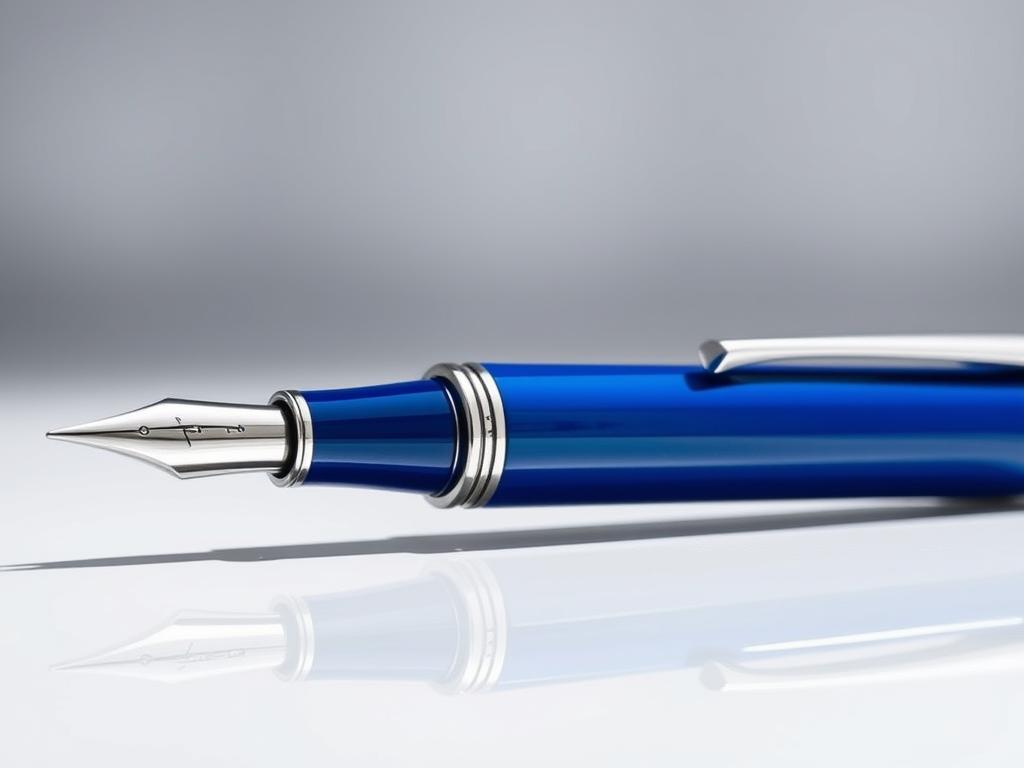
Brand History: Founded in Geneva in 1924, Caran d’Ache takes its name from the Russian word for pencil. The company began as a pencil manufacturer before expanding into fine writing instruments. Embodying Swiss precision and craftsmanship, Caran d’Ache is one of the few pen makers to control the entire manufacturing process in-house. Their commitment to environmental responsibility is reflected in sustainable production practices and innovative materials. The brand has become Switzerland’s ambassador of writing luxury, combining technical innovation with artistic design.
Current Flagship Model: The Léman collection exemplifies Caran d’Ache’s mastery of color and lacquer. These pens feature bodies with multiple layers of lacquer over subtle guilloche engraving, creating a remarkable depth of color. Available in fountain pen, rollerball, and ballpoint versions, the Léman combines Swiss precision with artistic flair.
Pros
- Exceptional color mastery and lacquer techniques
- Swiss precision engineering and quality control
- Environmentally responsible manufacturing
- Excellent balance and comfort for extended writing
Cons
- Less brand recognition than some competitors
- Limited edition models can be difficult to acquire
- Some models are on the heavier side
Key Feature: Caran d’Ache’s proprietary hexagonal guilloche engraving creates a subtle pattern beneath the lacquer, giving their pens an unmatched depth and play of light that changes as the pen is rotated.
Discover Swiss Excellence
Experience the perfect blend of Swiss precision engineering and artistic color mastery.
Graf von Faber-Castell

Brand History: Graf von Faber-Castell represents the luxury division of Faber-Castell, a company with roots dating back to 1761. Count Anton Wolfgang von Faber-Castell established the premium line in 1993 to honor the company’s heritage of craftsmanship. The brand combines traditional materials like wood and precious metals with modern design sensibilities. With over 250 years of experience in writing instruments, Graf von Faber-Castell embodies German precision and aristocratic elegance.
Current Flagship Model: The Classic Anello fountain pen exemplifies the brand’s philosophy of “luxury in simplicity.” Featuring ebony wood or precious resin combined with platinum-plated rings (anello means “ring” in Italian), this pen balances natural materials with precise metalwork. The hand-crafted 18K gold nib provides an exceptional writing experience.
Pros
- Exceptional use of natural materials like wood and leather
- Understated elegance suitable for professional settings
- Excellent balance and comfortable grip
- Strong heritage and craftsmanship legacy
Cons
- Wood components require more care than all-metal designs
- More conservative styling than some competitors
- Limited color options in some collections
Key Feature: Graf von Faber-Castell’s Perfect Pencil combines a pencil with an extender featuring a built-in sharpener and eraser, creating the ultimate luxury pencil experience—a unique offering among high-end writing instrument manufacturers.
Experience German Aristocratic Elegance
Discover writing instruments that combine centuries of craftsmanship with natural materials and timeless design.
S.T. Dupont
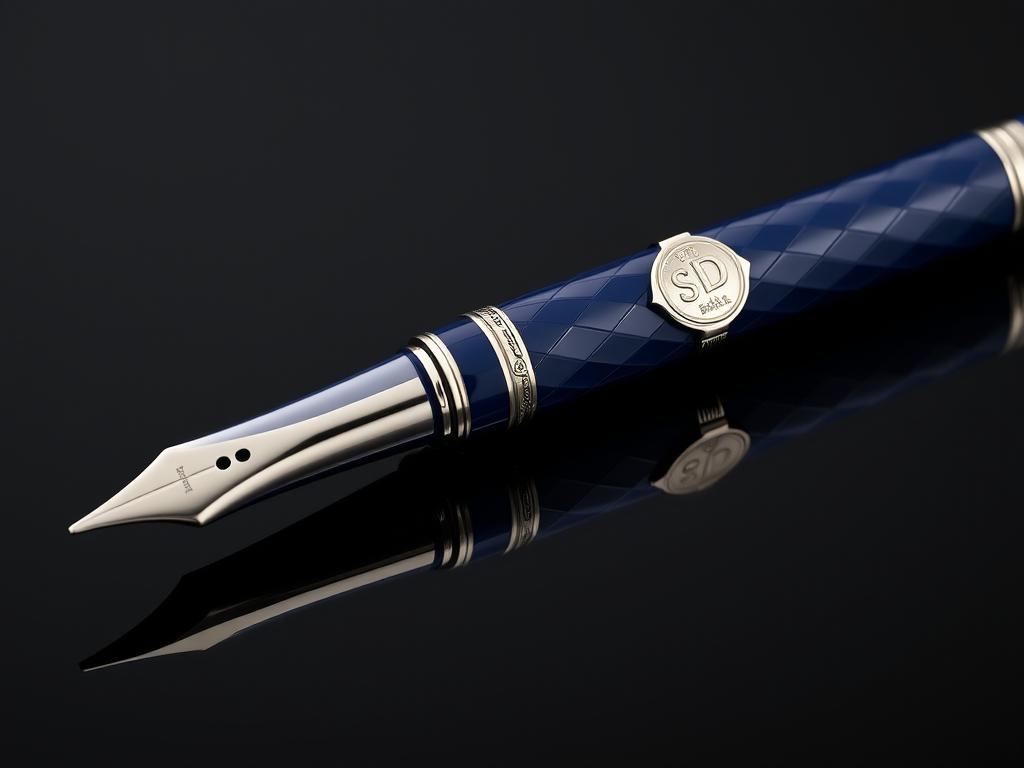
Brand History: Founded in Paris in 1872 by Simon Tissot Dupont, S.T. Dupont initially specialized in leather travel cases for diplomats and aristocracy. The company expanded into luxury lighters in the 1940s and fine writing instruments in the 1970s. S.T. Dupont became renowned for their mastery of Chinese lacquer, a closely guarded technique requiring up to 100 separate operations and months to complete. Their clientele has included royalty, heads of state, and celebrities, cementing their status as creators of functional luxury objects.
Current Flagship Model: The Line D Large fountain pen represents S.T. Dupont’s pinnacle of craftsmanship. Available in natural Chinese lacquer or precious metals, these pens feature the brand’s signature diamond-cut pattern and perfect mirror finish. The 14K gold nibs are meticulously crafted for optimal writing performance.
Pros
- Unmatched lacquer work with perfect mirror finish
- Distinctive diamond-cut pattern is instantly recognizable
- Excellent weight and balance for comfortable writing
- Strong heritage and connection to French luxury
Cons
- Premium pricing even among luxury brands
- Lacquer requires careful handling to avoid scratches
- Writing performance sometimes secondary to aesthetics
Key Feature: S.T. Dupont’s mastery of Chinese lacquer involves applying up to 100 layers by hand, with each layer polished to perfection before the next is applied, creating an incomparable depth and mirror finish.
Own a Piece of French Luxury
Experience the exceptional craftsmanship and artistry that has made S.T. Dupont the choice of royalty and celebrities.
Pelikan
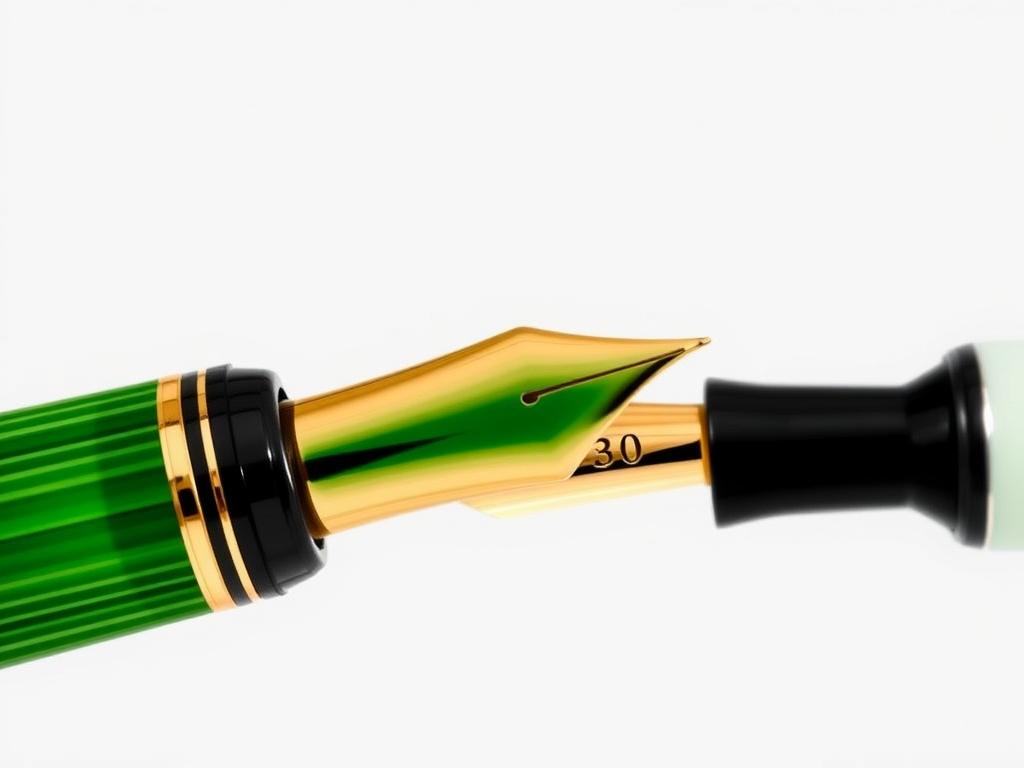
Brand History: Founded in Hanover, Germany in 1838, Pelikan began as a producer of artist paints and inks before manufacturing fountain pens in 1929. Their revolutionary piston-filling mechanism, introduced with the original 100 model, changed fountain pen design forever. The company’s iconic pelican logo and distinctive striped barrels have become instantly recognizable symbols of German engineering excellence. Despite changing ownership several times, Pelikan has maintained its commitment to quality and innovation in writing instruments.
Current Flagship Model: The Souverän M1000 represents Pelikan’s premium offering. This oversized fountain pen features the brand’s signature green-striped barrel made from cellulose acetate, a black resin cap with gold trim, and a large 18K gold two-tone nib. The differential piston mechanism provides smooth and reliable ink filling.
Pros
- Exceptional writing performance with smooth, wet nibs
- Reliable piston-filling mechanism with large ink capacity
- Iconic design with instantly recognizable striped pattern
- Excellent balance and comfortable posting
Cons
- Limited design variations compared to some competitors
- Larger models can be quite expensive
- Some quality control inconsistencies in recent years
Key Feature: Pelikan’s differential piston mechanism, refined over 90 years, creates a smooth and reliable filling system with a large ink capacity. The brass components ensure durability and perfect balance.
Experience German Engineering Excellence
Discover why Pelikan fountain pens have been the choice of discerning writers for nearly a century.
Luxury Pen Brand Comparison
| Brand | Best For | Price Range | Signature Feature | Country of Origin |
| Montblanc | Status Symbol | $500-$150,000 | Hand-crafted gold nibs | Germany |
| Namiki | Art Collectors | $1,200-$30,000 | Maki-e lacquer artistry | Japan |
| Nakaya | Writing Purists | $650-$6,000 | Custom-fitted nibs | Japan |
| Caran d’Ache | Color Enthusiasts | $350-$12,000 | Vibrant lacquer techniques | Switzerland |
| Graf von Faber-Castell | Natural Material Lovers | $400-$5,000 | Wood and precious metals | Germany |
| S.T. Dupont | Luxury Connoisseurs | $600-$10,000 | Chinese lacquer mastery | France |
| Pelikan | Practical Luxury | $400-$3,000 | Piston-filling mechanism | Germany |
| Parker | Entry-Level Luxury | $200-$3,500 | Arrow clip | USA/UK |
| Waterman | Classic Design | $175-$2,500 | French design sensibility | France |
| Lamy | Modern Design | $80-$1,500 | Bauhaus-inspired design | Germany |
| Cross | Gift Giving | $150-$2,000 | Lifetime mechanical guarantee | USA |
| Tibaldi | Mathematical Perfection | $750-$30,000 | Divine Proportion design | Italy |
Additional Luxury Pen Brands
Parker
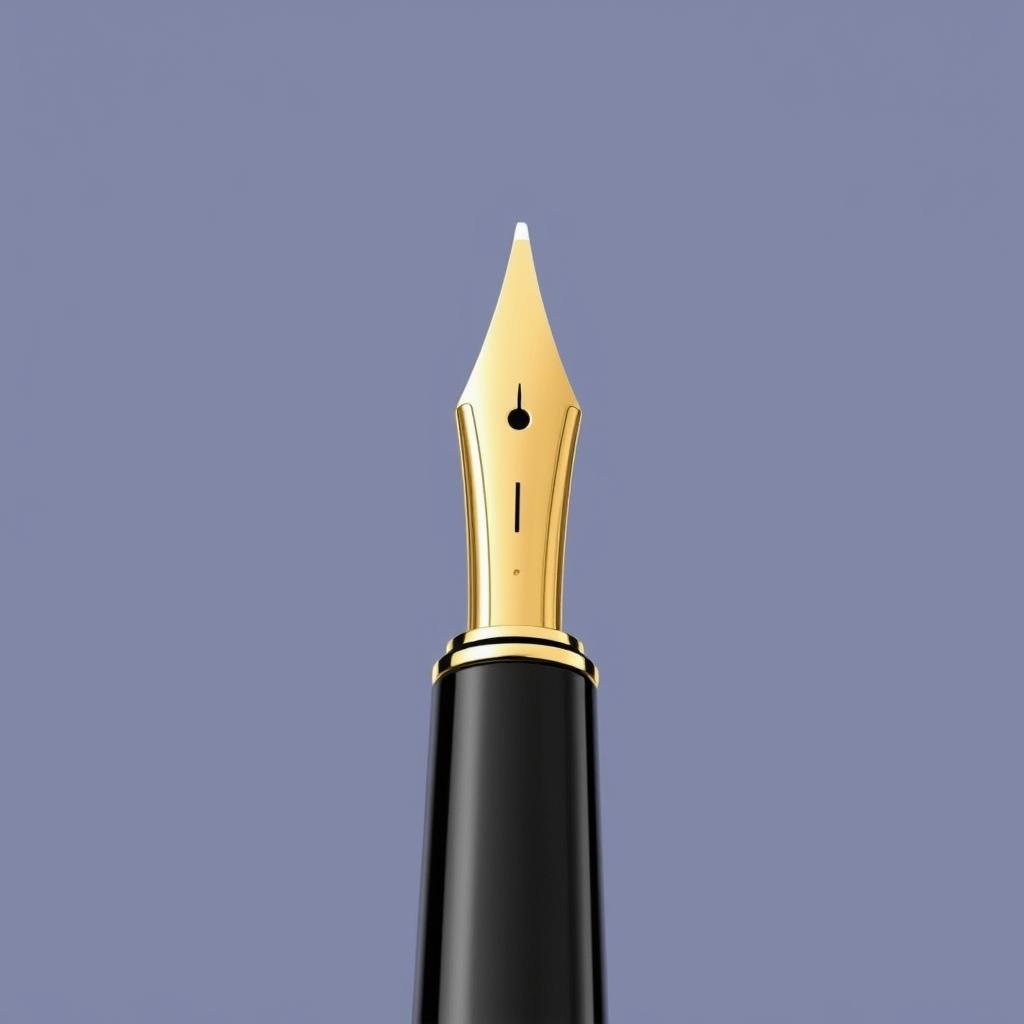
Founded in 1888 in Wisconsin, Parker revolutionized fountain pens with innovations like the Lucky Curve feed and Quick-drying Quink ink. Their iconic Duofold and “51” models defined writing in the 20th century. The distinctive arrow clip, introduced in 1934, remains one of the most recognizable pen design elements worldwide.
Flagship: The Duofold Centennial honors Parker’s heritage with its classic design, 18K gold nib, and perfect balance.
Waterman

Founded in 1884 in New York by Lewis Edson Waterman, who patented the first reliable fountain pen with a regulated ink feed system. Now French-owned, Waterman combines Parisian design sensibility with a legacy of innovation. Their pens are known for reliable performance and elegant styling.
Flagship: The Exception stands out with its unique square-to-round profile and exceptional writing performance.
Lamy

Founded in 1930 in Heidelberg, Germany, Lamy revolutionized pen design with their Bauhaus-inspired aesthetic. The Lamy 2000, designed by Gerd A. Müller in 1966, remains in production as a modern design classic. The company focuses on innovative engineering and contemporary styling.
Flagship: The Lamy 2000 combines Bauhaus minimalism with innovative features like a hooded 14K gold nib and brushed makrolon body.
Cross

Founded in 1846 in Rhode Island, Cross is America’s oldest manufacturer of fine writing instruments. Their pens have signed important documents and been used by U.S. Presidents since the 1970s. Known for reliable performance and lifetime mechanical guarantees, Cross pens represent American craftsmanship.
Flagship: The Townsend represents Cross’s premium offering with its classic profile and excellent balance.
Tibaldi
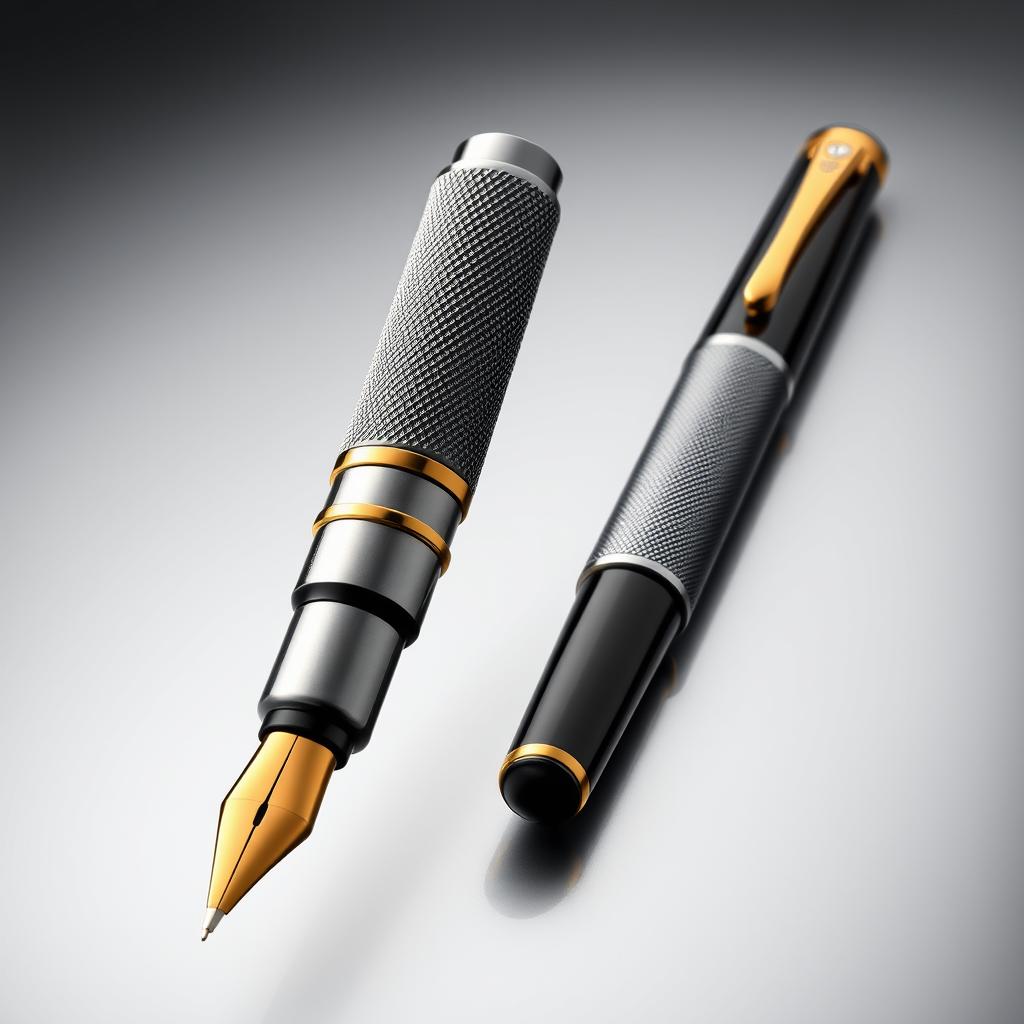
Founded in 1916 in Florence, Italy, Tibaldi is renowned for incorporating the Divine Proportion (1:1.618) into their pen designs. Revived in 2004, the brand now creates luxury writing instruments often in collaboration with prestigious brands like Bentley. Their pens combine Italian artistry with mathematical precision.
Flagship: The Bentley collection features automotive-inspired design elements and perfect mathematical proportions.
Other Notable Brands

The luxury pen market includes many other prestigious manufacturers worth exploring:
- Visconti (Italy) – Known for innovative filling systems and materials
- Aurora (Italy) – Classic Italian craftsmanship since 1919
- Omas (Italy) – Vintage models highly sought by collectors
- Conway Stewart (UK) – British heritage and colorful resins
- Yard-O-Led (UK) – Sterling silver writing instruments
Finding Your Perfect Luxury Pen
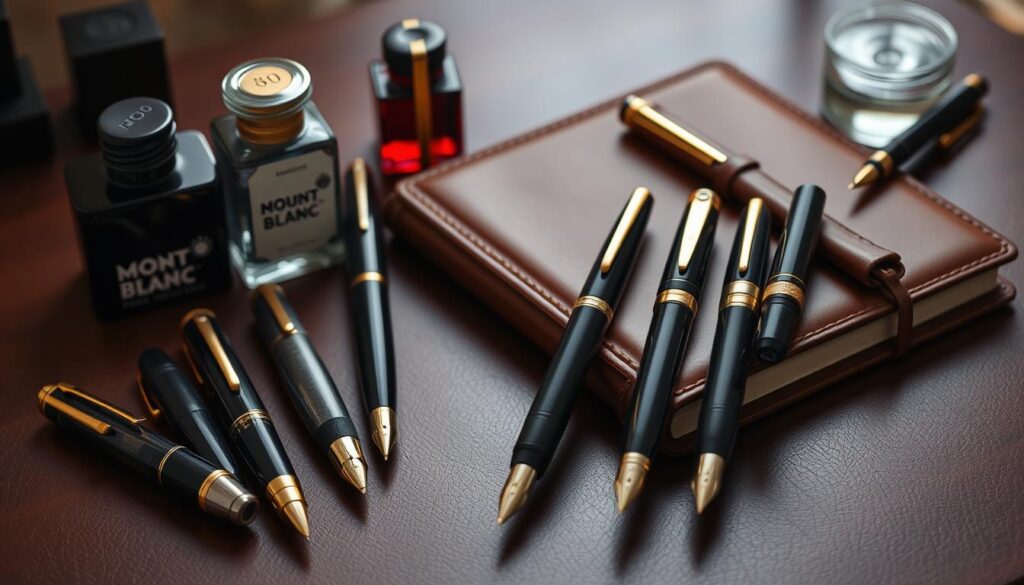
The world of luxury pens offers something for every discerning writer and collector. For those seeking status and recognition, Montblanc remains the undisputed standard with their iconic Meisterstück line. Art enthusiasts will appreciate the museum-worthy craftsmanship of Namiki and Nakaya, whose Japanese urushi lacquer techniques transform writing instruments into collectible masterpieces.
Writers who prioritize performance might gravitate toward Pelikan’s reliable piston-fillers or Nakaya’s custom-fitted nibs. Those with an eye for design can explore Lamy’s Bauhaus-inspired minimalism or S.T. Dupont’s perfect lacquer finishes. For gift-giving, Cross and Parker offer prestigious options with strong heritage at more accessible price points.
When selecting a luxury pen, consider not just the price but the writing experience, aesthetic appeal, and the story behind the brand. The perfect luxury pen should feel like an extension of yourself—comfortable in your hand and reflective of your personal style. Whether you’re signing important documents, writing personal correspondence, or simply jotting down thoughts, a fine writing instrument elevates the experience from mundane to meaningful.
Which Luxury Pen Speaks to Your Style?
Explore our curated collection of premium writing instruments from the world’s most prestigious manufacturers.
Frequently Asked Questions About Luxury Pens
What makes a pen “luxury”?
Luxury pens are distinguished by several factors: exceptional craftsmanship, premium materials (such as gold nibs, precious metals, and rare resins), meticulous attention to detail, limited production runs, and heritage. They typically undergo extensive hand-finishing and quality control. Beyond materials and construction, luxury pens often represent brands with storied histories and are designed to last for generations, potentially becoming heirlooms or collectibles that appreciate in value.
Are luxury pens worth the investment?
The value of a luxury pen depends on your perspective. For daily writers, the superior writing experience and durability can justify the cost over time. For collectors, limited editions from prestigious brands often appreciate in value. For professionals, a fine writing instrument can make a positive impression in business settings. While digital alternatives exist for writing, many find that the tactile experience, aesthetic pleasure, and personal connection to a fine pen offer intangible benefits that technology cannot replicate.
How should I care for my luxury pen?
Proper maintenance ensures your luxury pen will last for generations. For fountain pens, flush the nib and feed with water every 4-6 weeks if used regularly, or before changing ink colors. When not in use for extended periods, clean and empty the pen completely. Store pens horizontally or with the nib pointing upward to prevent ink leakage. Keep pens away from extreme temperatures and direct sunlight, which can damage materials like resin or lacquer. For pens with special finishes like lacquer or urushi, avoid contact with alcohol, solvents, or hand sanitizers which can damage these delicate surfaces.
What is the difference between a gold and steel nib?
Gold nibs (typically 14K or 18K) offer greater flexibility and a softer writing experience compared to steel nibs. The flexibility allows the nib to adapt to your writing style over time, creating a personalized writing experience. Gold is also more corrosion-resistant, which is beneficial when using certain inks. Steel nibs provide a firmer writing experience with less line variation and are more durable against pressure. While gold nibs are traditionally associated with luxury pens, many high-end manufacturers now offer exceptional steel nibs that rival gold in performance but with different writing characteristics.
